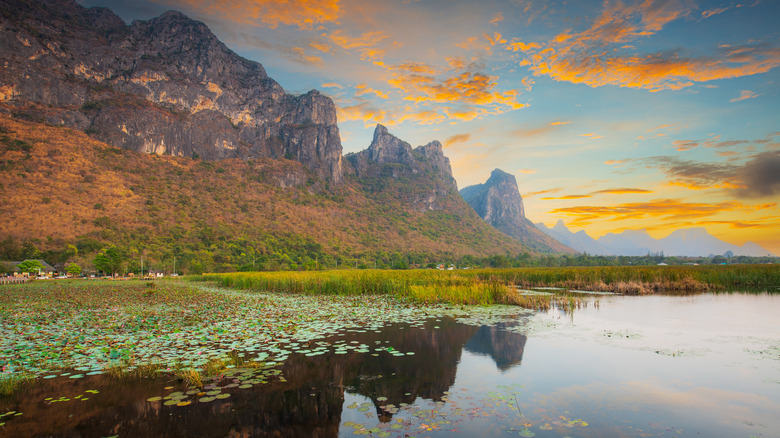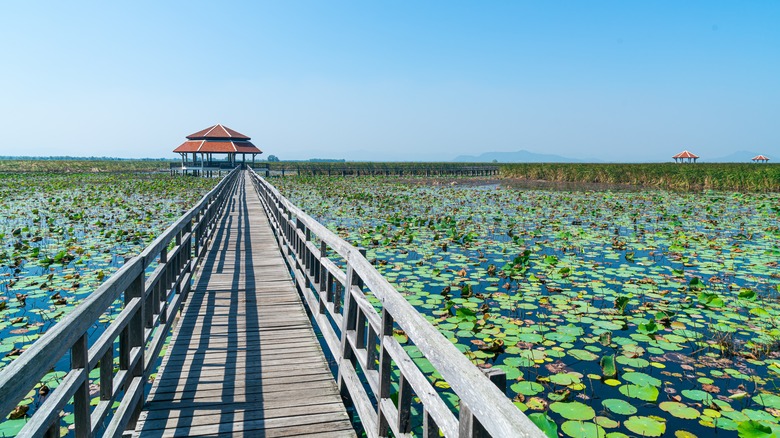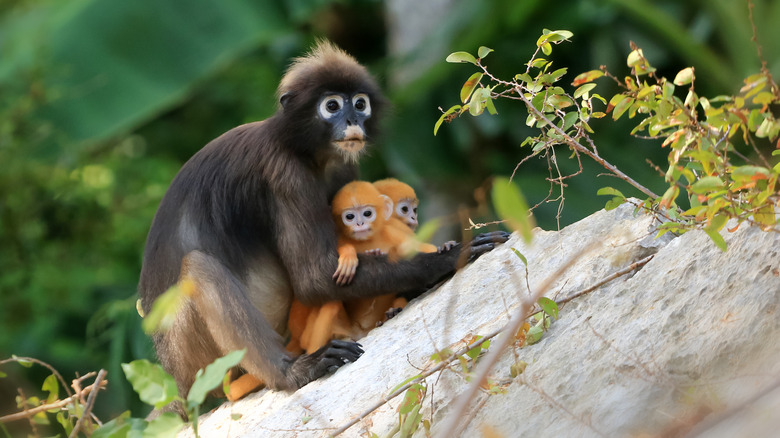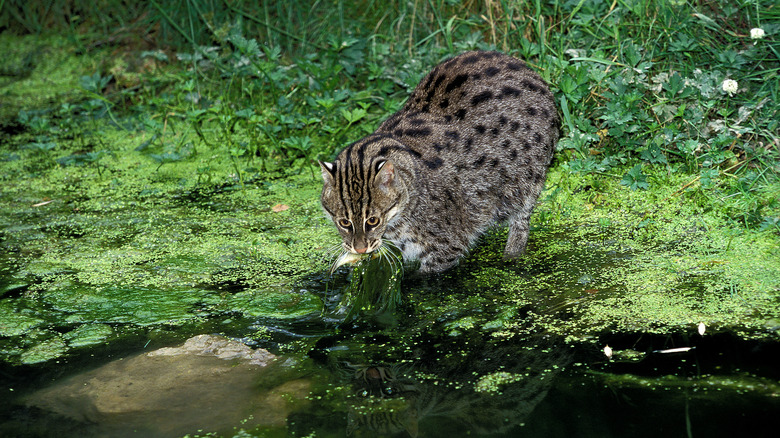One Of The Best National Parks In Southeast Asia For Viewing Wildlife
Khao Sam Roi Yot National Park is most famous for the sunlit cave temple Phraya Nakhon Cave, mountain peaks, and beautiful beaches — but it may also be one of the best places to see wildlife in its natural habitat. You may not see Thailand's national animal (the Asian elephant) here, but Khao Sam Roi Yot offers visitors a glimpse of an ecosystem teaming with life. Between the coastal wetlands and the freshwater marsh, visitors have the rare opportunity to see many types of plants and animals — some of which are endemic to the park and can be seen nowhere else on Earth.
Tourists visiting Khao Sam Roi Yot may spend the day hiking in the park, enjoying the view from a relaxing boat tour, exploring caves, climbing mountains, or even camping on the beach. No matter where you choose, you are sure to see some fascinating creatures. Sharp-eyed visitors to the park may spot herons and egrets hunting in the shallow water, dusky langurs swinging in the mangroves, and maybe even an Irrawaddy dolphin leaping in the sea.
Khao Sam Roi Yot's unique wetlands
For tourists looking to see different varieties of animals on their trip to Thailand, Khao Sam Roi Rot National Park may be the best choice. There is nowhere else quite like these wetlands. They are unique because they feature freshwater and coastal marshes. While some have been lost to local shrimp farming, Khao Sam Roi Rot National Park still has the largest freshwater marsh in Thailand. Between that and the seashore, there is a unique, brackish (partly salty) ecosystem surrounded by mangroves.
These wetlands are home to over 100 fauna species, including fish and frogs, and are one of the best locations for birdwatchers. Some spots, like the Bueng Bua Boardwalk, allow visitors to walk deep into the marsh without getting their feet wet. On this path, visitors might spot bronze-winged jacanas and purple moorhens walking through the tall grasses, brilliantly colored kingfishers perched on branches, or ospreys soaring overhead.
Monkeys in the mangroves
From the first moment you enter the park, you are greeted by the sights and sounds of Thailand's wildlife. As one park visitor recounts, the way into the park from its headquarters is surrounded by mangroves. As tourists take the walkway into Khao Sam Roi Yot National Park, they are often greeted by monkeys, such as crab-eating macaques, leaping in the branches, and watching the approaching humans with interest.
Like crab-eating macaques, dusky langurs are commonly found in the park and may be willing to come close enough for visitors to get a good look. These playful and social monkeys are best known for their gray fur and white circles around their eyes, making it look like they have large cartoonish peepers. Their babies, which visitors may be able to spot in the park, are bright orange.
Lucky guests may be able to spot a Sunda slow loris in the forest as well. These primates, with their characteristic enormous eyes, are definitely living in the park but move extremely slowly through the treetops in search of fruit, nectar, sap, and arthropods. To make them even more difficult to find, they are almost always alone and only active at night.
Rare and endangered animals in the park
The unique habitats in Khao Sam Roi Yot National Park make it one of the few places where some endangered species can thrive. Endangered creatures like the Sunda slow loris, the yellow-headed tortoise, and vulnerable and globally threatened birds like the Malaysian Plover and the spot-billed Pelican have all been found living safely in the park. A few, like the Sam Roi Yot leaf-toed gecko, are endemic and cannot be found elsewhere. The limestone mountains and hills the park is named for may be the only place these geckos can survive.
Maybe most excitingly, the park is home to the elusive fishing cat. These incredible spotted wild cats are a little larger than their domestic counterparts and live exclusively in wetlands, like those found at Khao Sam Roi Yot. Fishing cats love to swim in the water and hunt for fish by sitting patiently on the shore. Although they are currently being studied and protected in the park, seeing one is incredibly difficult. These creatures are so tricky that even researchers struggle to find them.



